
Nature
11:02, 11-Dec-2018
How the crested ibis population went from seven to 3,000
Updated
10:45, 14-Dec-2018
By Ding Qian
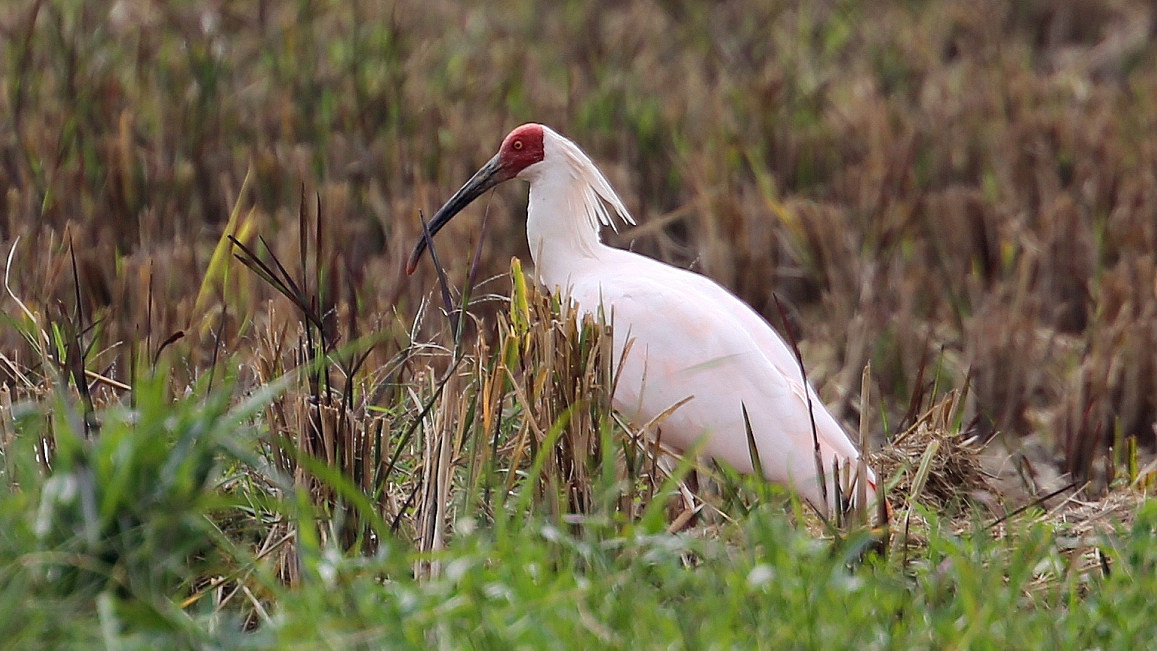
The crested ibis is a large white ibis with distinctive red claws. At one time, they were widespread in China, Japan, the Korean Peninsula and Russia. However, due to a loss of habitat, illegal hunting and widespread use of pesticides and fertilizers, the bird was on the brink of extinction.
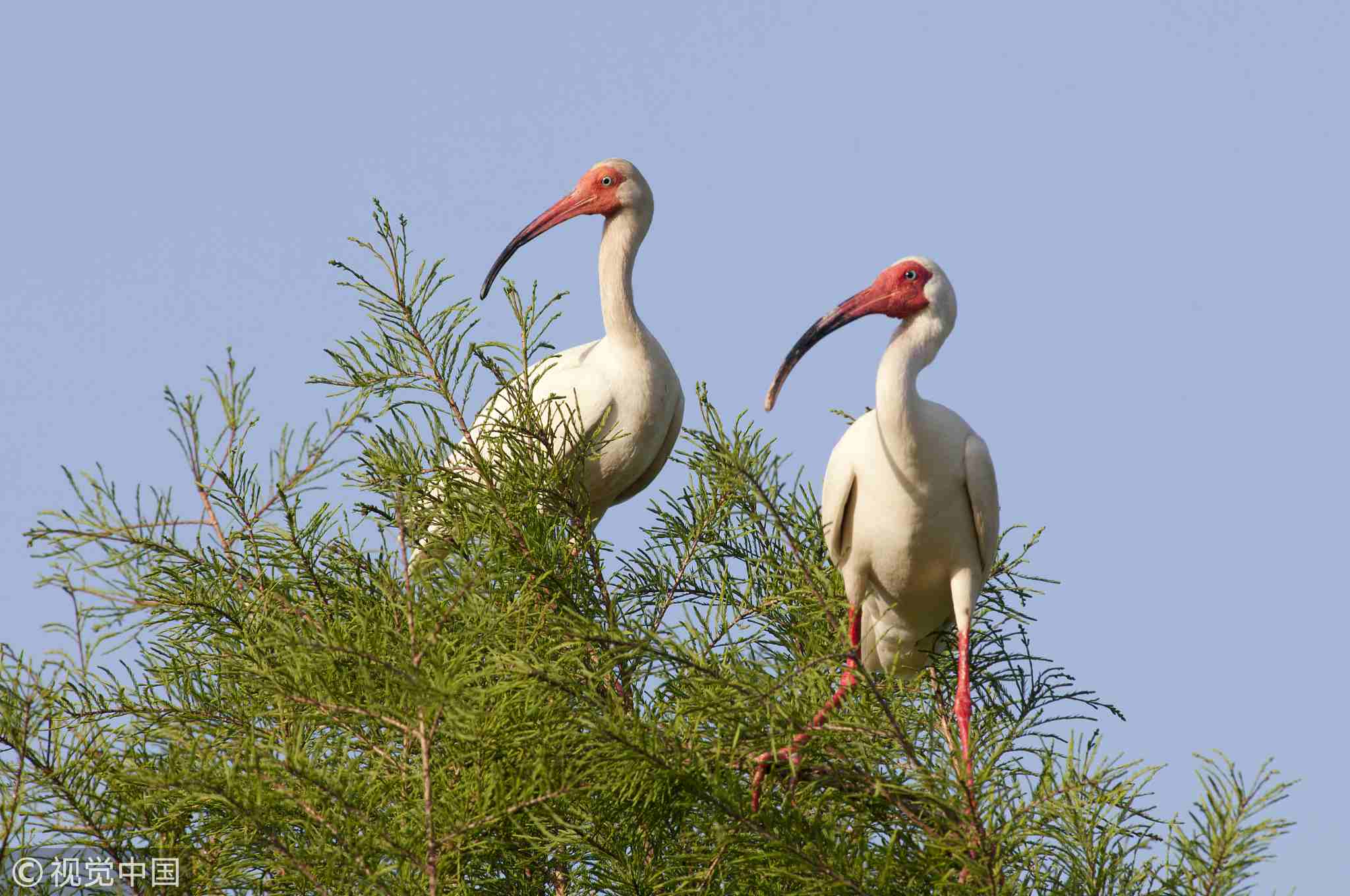
Crested ibises. /VCG Photo
Crested ibises. /VCG Photo
In 1981, only seven wild crested ibises were discovered in Yangxian, China's Shaanxi Province. Now the population of the endangered bird has been growing thanks to decades of conservation.
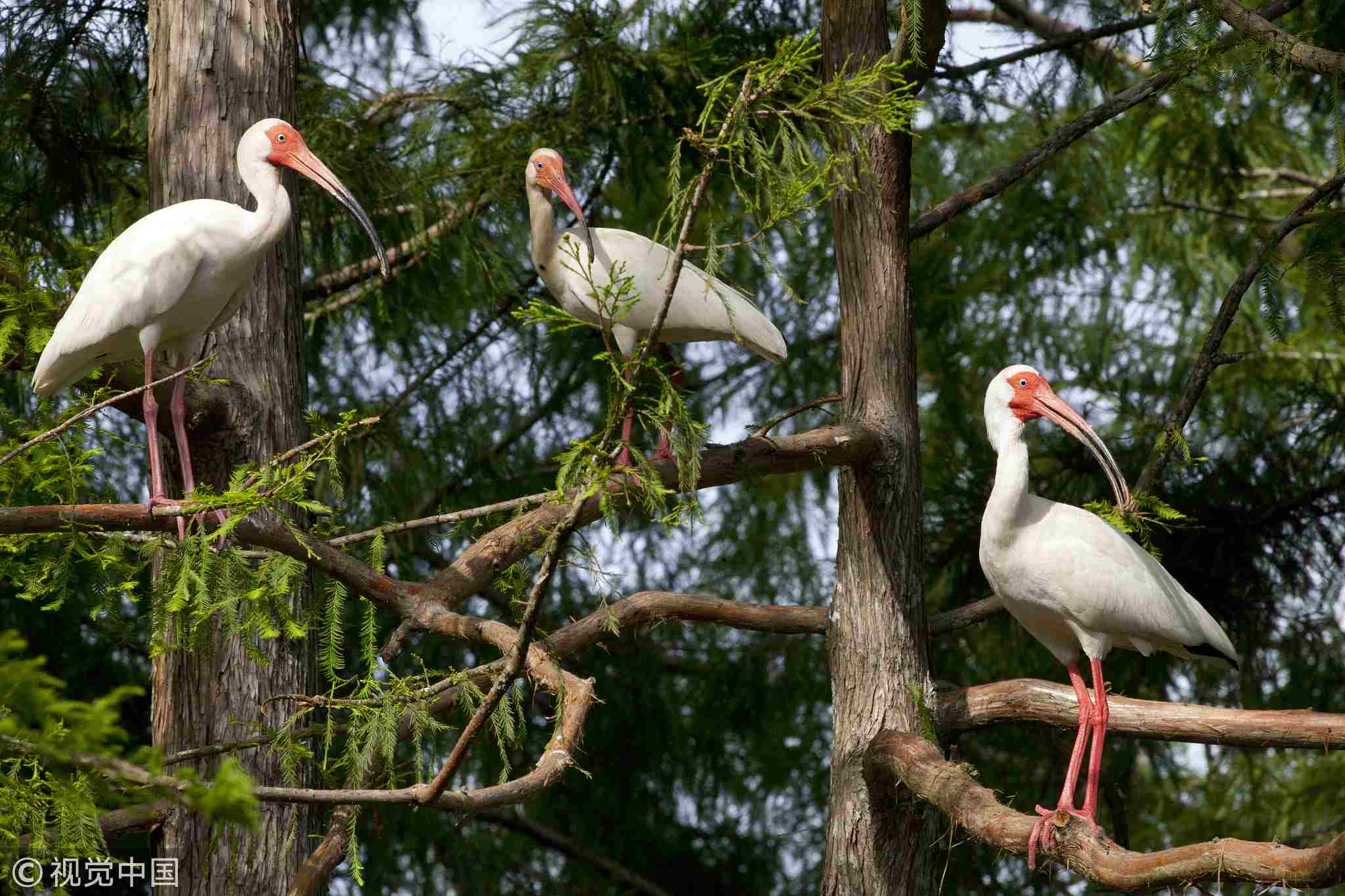
VCG Photo
VCG Photo
Initially, scientist employed methods such as all-weather monitoring and radio tracking to protect crested ibis from being injured, but it turned out to be not effective enough; the growth of the bird's population was extremely slow. In 1999, the population had only reached 50.
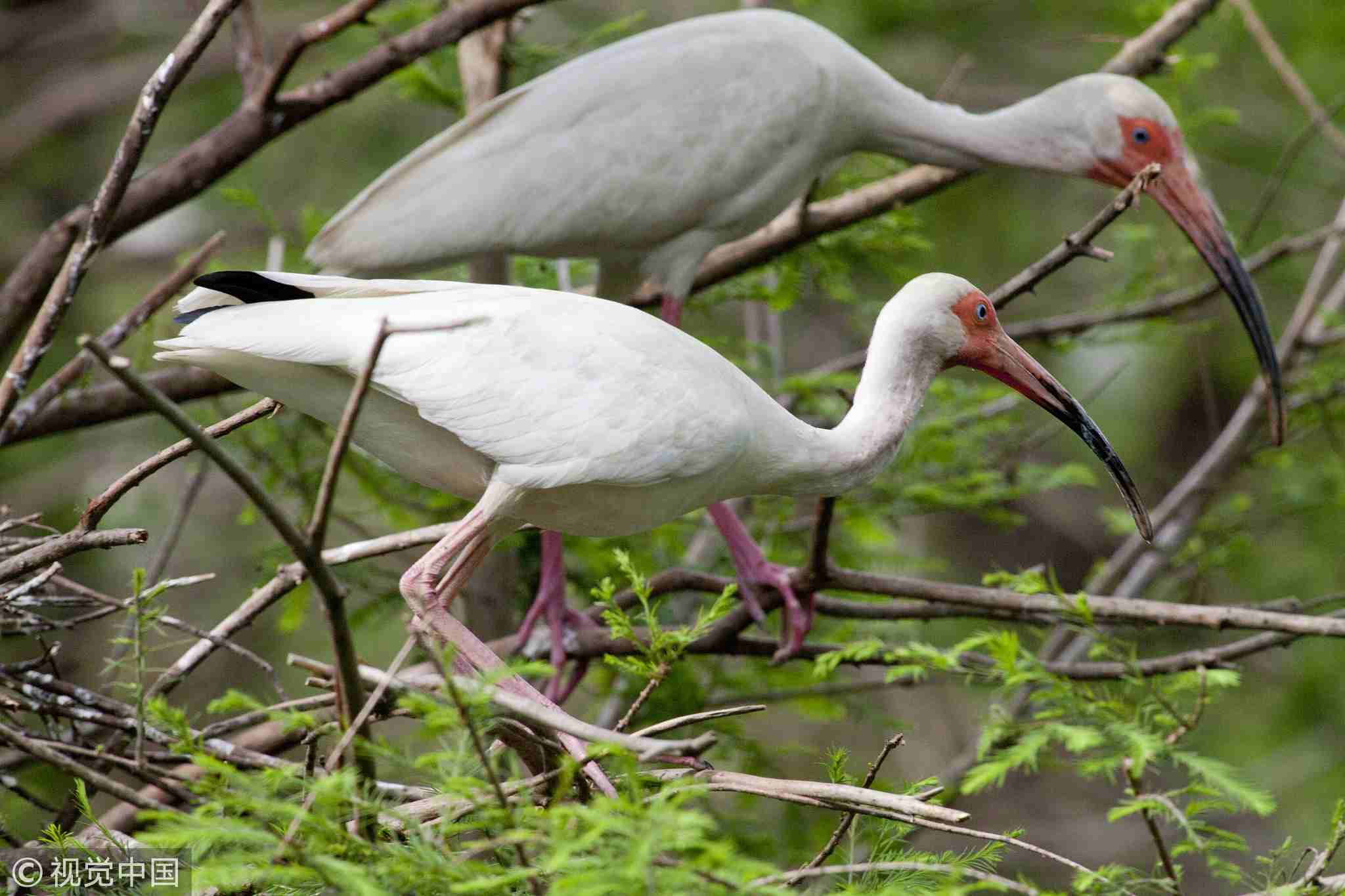
VCG Photo
VCG Photo
In 1990, Chinese scientists began to conduct research on the artificial breeding of crested ibis. They have overcome technical difficulties such as feed allocation, artificial hatching, and have successfully cultivated seven generations of the bird.
The breeding program led to the fast growth of the bird's population, expanding the species' habitat from just five to 14,000 square kilometers across the country. But inbreeding also brings high risk of deformity. Some birds were born with obvious defects such as problematic claws. To lower such risks, genetic management and selection was conducted, where only genetically stronger birds were chosen to be reproduced in the wild.
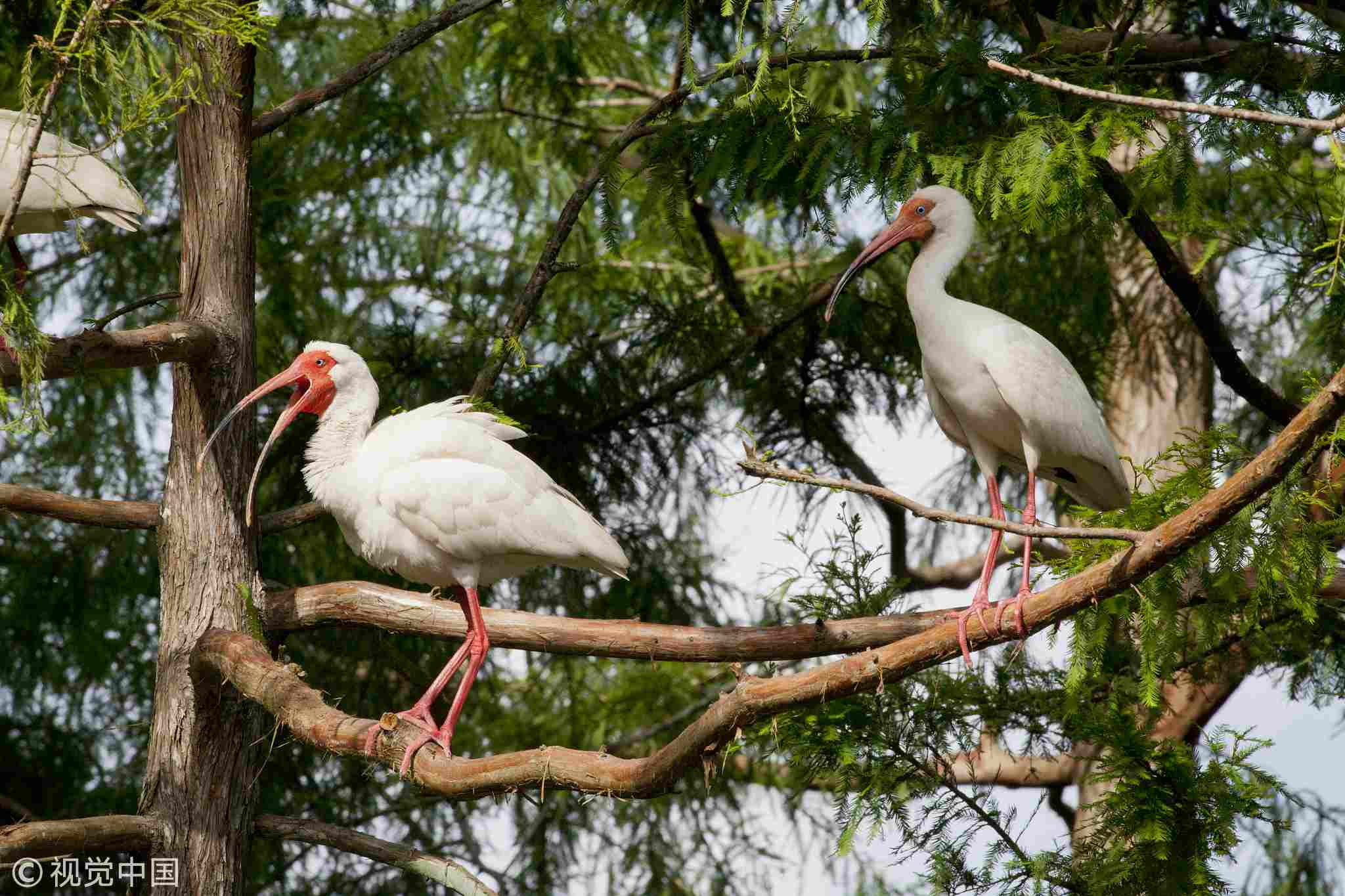
VCG Photo
VCG Photo
After the technical breakthrough, scientists turned their focus into “habitat restoration.” Since 2000, the local government has implemented measures such as banning the use of pesticides and fertilizers in Yangxian County, Shaanxi Province. Locals are also rewarded for protecting the nests of crested ibis and nursing their chicks. Therefore, more residents are motivated to participate in the bird protection.
On top of this, China assisted Japan and South Korea in building artificial breeding and release bases for the species. Crested ibis is an iconic bird deeply rooted in Japanese history and culture. It was on the verge of extinction in Japan in the 1980s, now it is prospering and providing a boost to the local economy on the island of Sado.

Vintage illustration of Japanese crested ibis and alternating bats, from a pattern book for kimono design; woodblock print, 1882. /VCG Photo
Vintage illustration of Japanese crested ibis and alternating bats, from a pattern book for kimono design; woodblock print, 1882. /VCG Photo
Today, it's estimated that there are more than 3,000 (both in captivity and in the wild) crested ibises globally, including 2,500 in China, 500 in Japan and another 309 in South Korea.
Apart from crested ibis, other animal species including the Chinese alligator, the giant panda, and elk have been successfully saved from extinction via conservation efforts in China.

SITEMAP
Copyright © 2018 CGTN. Beijing ICP prepared NO.16065310-3
Copyright © 2018 CGTN. Beijing ICP prepared NO.16065310-3